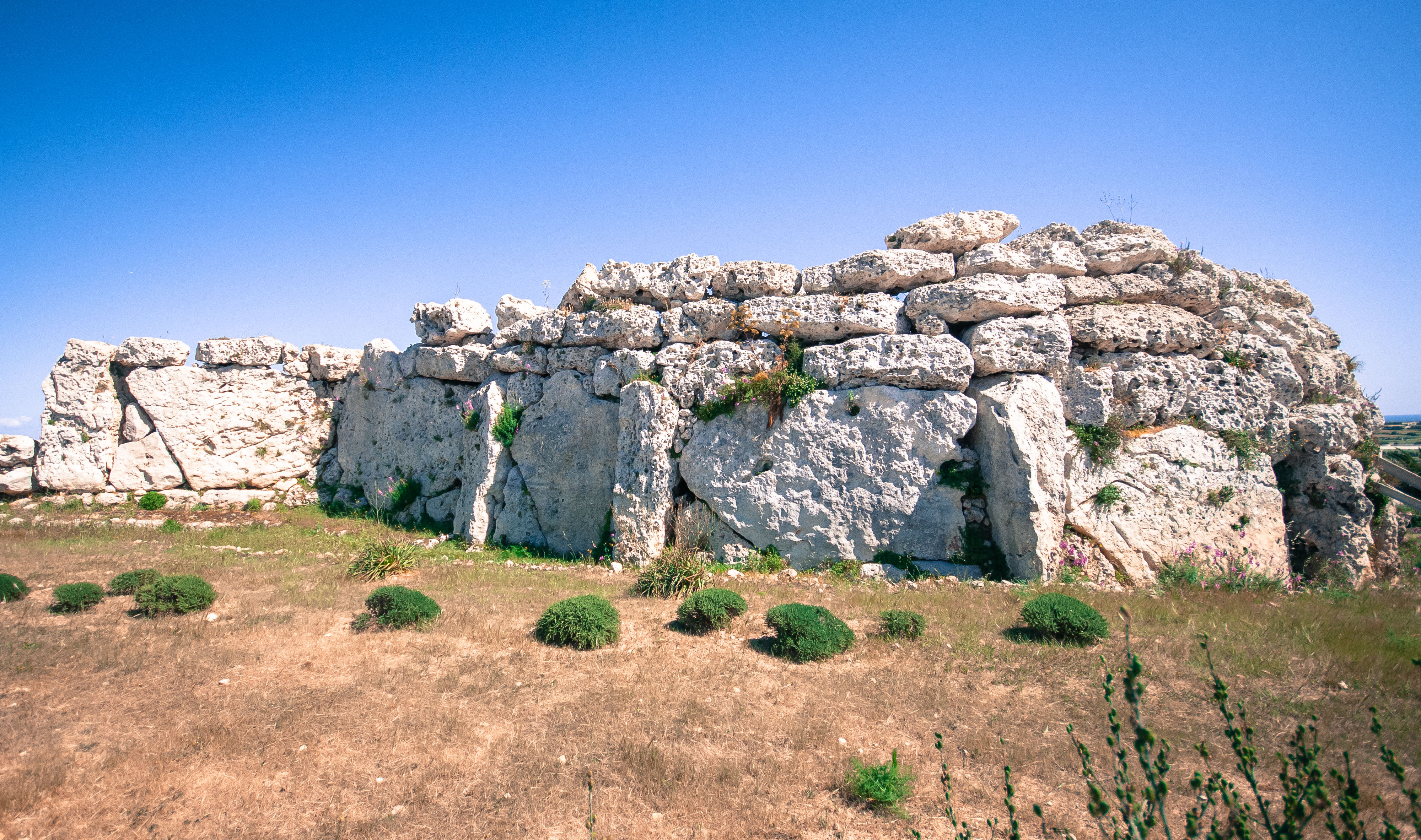|
Xagħra Stone Circle
The Xagħra Stone Circle ( mt, Iċ-Ċirku tax-Xagħra), also known as the Xagħra Hypogeum or the Brochtorff Circle, is a Neolithic funerary complex located in Xagħra, Gozo, Malta. It consists of a series of caves which were used to bury the dead, and which were surrounded by a walled enclosure. It mainly dates back to around 3000 to 2400 BC, although the earliest tombs at the site date back to 4100 to 3800 BC. The caves collapsed sometime before 2000 BC, and the site was later used for domestic and agricultural purposes. After being discovered in the late 18th century, the site was excavated in the 1820s before being reburied and forgotten. It was rediscovered in 1964, and major excavations took place between 1987 and 1994. It is the only prehistoric stone-enclosed hypogeum in Europe, and it is regarded as one of the most important archaeological sites in Malta along with the megalithic temples and the Hypogeum of Ħal-Saflieni. Recent dating through AMS has added scores of new ... [...More Info...] [...Related Items...] OR: [Wikipedia] [Google] [Baidu] |
Xagħra
Xagħra ( mt, Ix-Xagħra) is an administrative unit of Malta, on the island of Gozo. It is one of the earliest inhabited parts of Gozo, being home to the Ġgantija megalithic temples which date back to the year 3600BC and the Xagħra Stone Circle. Natural underground features such as Xerri's Grotto and Ninu's Cave can be found in this town, along with Calypso's Cave which overlooks the red sandy beach of Ramla. It is the second largest town in Gozo, having a population of 5,161 inhabitants according to the 2021 Population and Housing Census, and is situated to the North-East of the Gozo capital Victoria. Xagħra is a popular tourist attraction, in view of its historical heritage, lively Victory Square, and the thousands who flock to Ramla Bay in summer and to the temples all year round. During the British period, Xagħra was also known as ''Casal Caccia''. Twin towns – sister cities Xagħra is twinned with: * Offida, Ascoli Piceno Ascoli Piceno (; la, Asculum; dialetto a ... [...More Info...] [...Related Items...] OR: [Wikipedia] [Google] [Baidu] |
Ġgantija
Ġgantija (, "Giantess") is a megalithic temple complex from the Neolithic on the Mediterranean island of Gozo. The Ġgantija temples are the earliest of the Megalithic Temples of Malta and are older than the pyramids of Egypt. Their makers erected the two Ġgantija temples during the Neolithic (c. 3600–2500 BC), which makes these temples more than 5500 years old and the world's second oldest existing manmade religious structures after Göbekli Tepe in present-day Turkey. Together with other similar structures, these have been designated a UNESCO World Heritage Site, the Megalithic Temples of Malta. The temples are elements of a ceremonial site in a fertility rite. Researchers have found that the numerous figurines and statues found on site are associated with that cult. According to local Gozitan folklore, a giantess who ate nothing but broad beans and honey bore a child from a man of the common people. With the child hanging from her shoulder, she built these temples and use ... [...More Info...] [...Related Items...] OR: [Wikipedia] [Google] [Baidu] |
Prehistoric Sites In Malta
Prehistory, also known as pre-literary history, is the period of human history between the use of the first stone tools by hominins 3.3 million years ago and the beginning of recorded history with the invention of writing systems. The use of symbols, marks, and images appears very early among humans, but the earliest known writing systems appeared 5000 years ago. It took thousands of years for writing systems to be widely adopted, with writing spreading to almost all cultures by the 19th century. The end of prehistory therefore came at very different times in different places, and the term is less often used in discussing societies where prehistory ended relatively recently. In the early Bronze Age, Sumer in Mesopotamia, the Indus Valley Civilisation, and ancient Egypt were the first civilizations to develop their own scripts and to keep historical records, with their neighbors following. Most other civilizations reached the end of prehistory during the following Iron Age. T ... [...More Info...] [...Related Items...] OR: [Wikipedia] [Google] [Baidu] |


